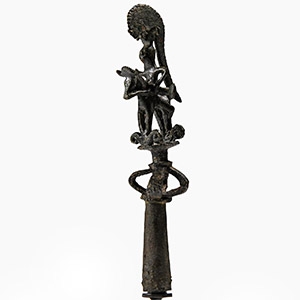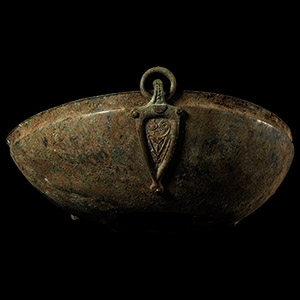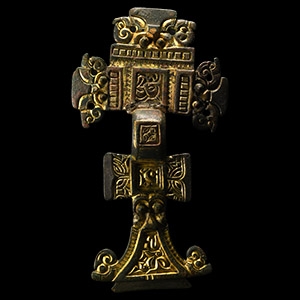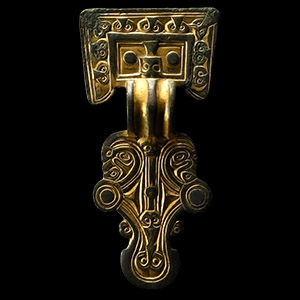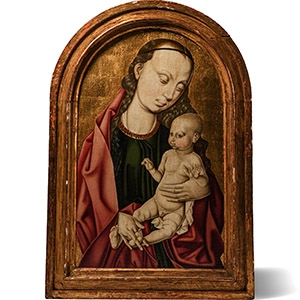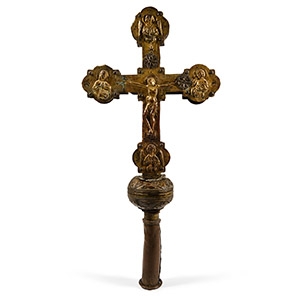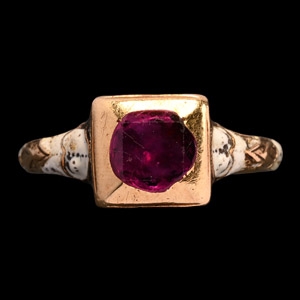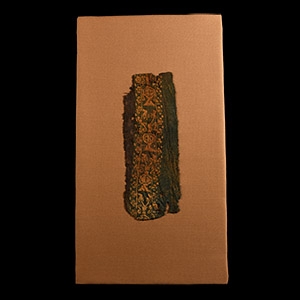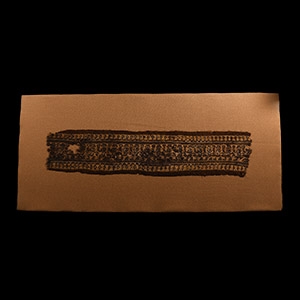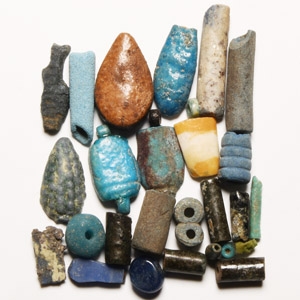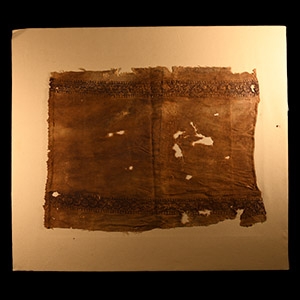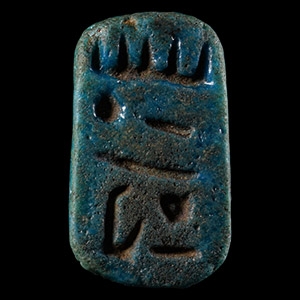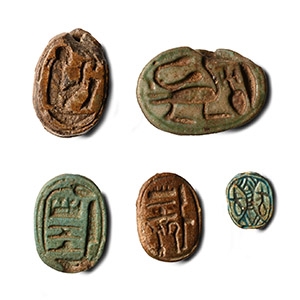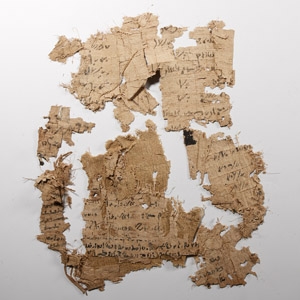Home > Auctions > 5 - 9 September 2023
Ancient Art, Antiquities, Natural History & Coins
Auction Highlights:
Acquired 1970s-1996.
Property of a North American collector.
London collection, 2016.
Cf. Andrews, C., Amulets of Ancient Egypt, London, 1994, pl.46, for types.
Acquired 1980s-1990s.
Private collection of H.N., Milton Keynes, Berkshire, UK.
Acquired 1970s-1996.
Property of a North American collector.
London collection, 2016.
Cf. Wulff,O. & W.F.Volbach, Spätantike und koptische Stoffe aus ägyptischen Grabfunden in den Staatlichen Museen Kaiser-Friedrich-Museum / Ägyptisches Museum Schliemann-Sammlung, Berlin, 1926, no.6880, p.123, for similar textile in style.
Tapestry technique on natural light yellow wool upon linen. It is highly probable that this tapestry was part of a tunic decoration, a clavus, running vertically on the breast and on the back of it. The decoration conformed to a specific layout with the back mirroring the front. These matching bands, called clavi, ran on either side of the neck. They could be full length or like our specimen, stop above the waistline.
Acquired 1970s-1996.
Property of a North American collector.
London collection, 2016.
Cf. Del Francia Barocas, L., Museo dell'Alto Medioevo, Roma, I materiali Copti, p.222-223, nos.63 A-B-C, for similar textile figures and warp.
Tapestry technique on linen and wool. It is highly probable that this tapestry was part of a tunic decoration, a clavus, a segment running vertically on the breast and on the back of it.
Ex early 20th century Home Counties, UK, collection.
Acquired 1970s-1996.
Property of a North American collector.
London collection, 2016.
Cf. Wulff, O. & Volbach, W.F., Spätantike und koptische Stoffe aus ägyptischen Grabfunden in den Staatlichen Museen Kaiser-Friedrich-Museum / Ägyptisches Museum Schliemann-Sammlung, Berlin, 1926, no.4627, p.22 and no.9195, for similar decorations on tunics.
Tunic decoration conformed to a specific layout with the back mirroring the front. Matching bands called clavi ran on either side of the neck. They could be full length, like in our specimen, or stop above the waistline.
Acquired 1970s-1996.
Property of a North American collector.
London collection, 2016.
See Andrews, C., Amulets of Ancient Egypt, London, 1994, for discussion.
From an early 20th century collection, Carnavon, North Wales, UK.
Collected since the 1970s.
Ex Everitt collection, acquired by descent 2017.
Cf. Ben-Tor, D., The Scarab. A Reflection of Ancient Egypt, Jerusalem, 1993, pp. 32 (for the scarab with antelope), 33 (for the two scarabs with human figures).
Acquired 1970s-1996.
Property of a North American collector.
London collection, 2016.
Cf. Pritchard, F., Clothing Culture: Dress in Egypt in the First Millennium AD,, Manchester, 2006, pp.74-75, and fig.4.23, for similar textile style.
Among the many fragments from wool tunics are several long strips that match to form nearly full-length central pectoral clavi. They are patterned with a profusion of small figures or interlaced abstract designs, birds, plants and animals with a contrasting border filled with geometric motifs.
Acquired 1970s-1996.
Property of a North American collector.
London collection, 2016.
Cf. similar in the collection of the British Museum under accession no. OA+.14107.
Acquired 1970s-1996.
Property of a North American collector.
London collection, 2016.
277 - 288 of 2453 LOTS

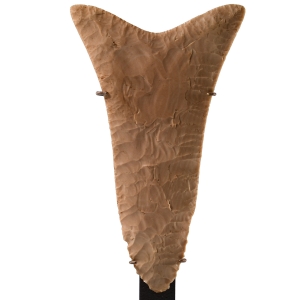
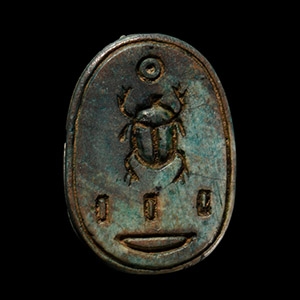
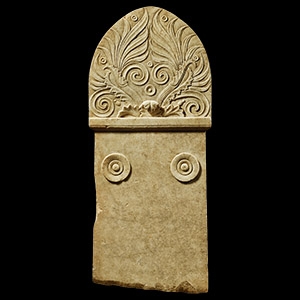
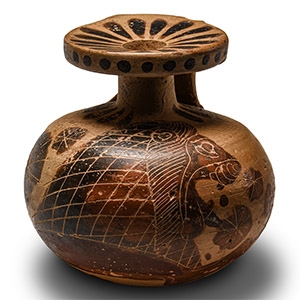
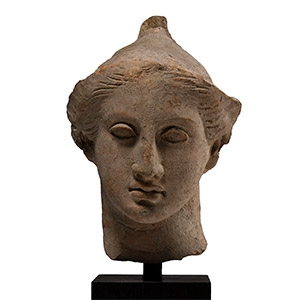
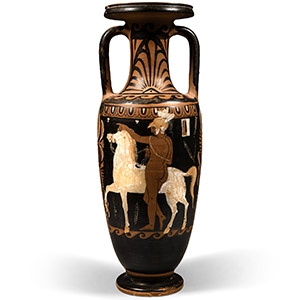
.jpg)
.jpg)
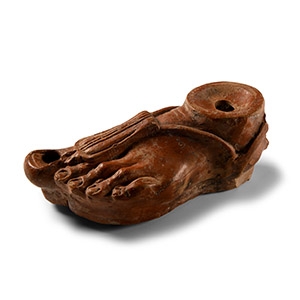
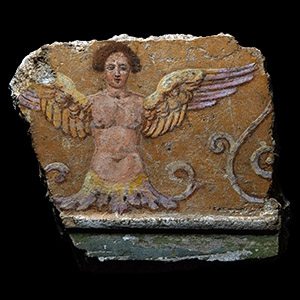
.jpg)
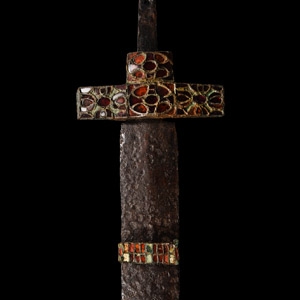
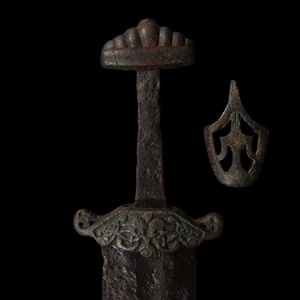
.jpg)
